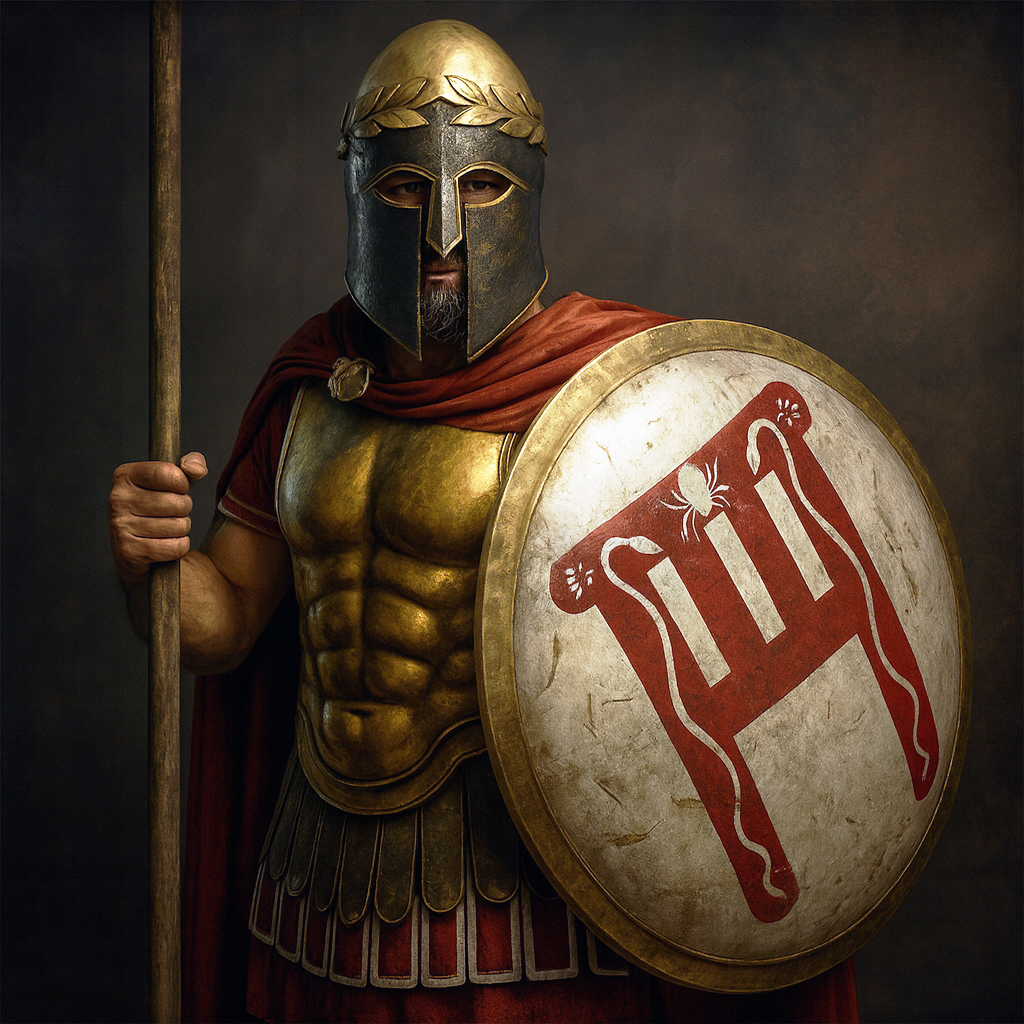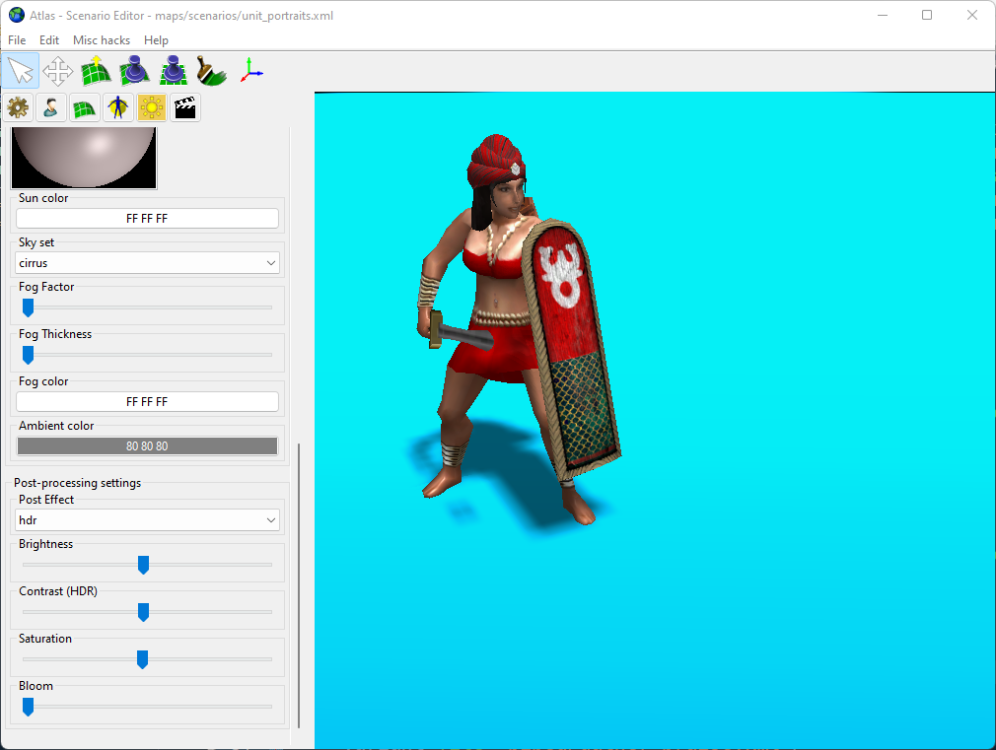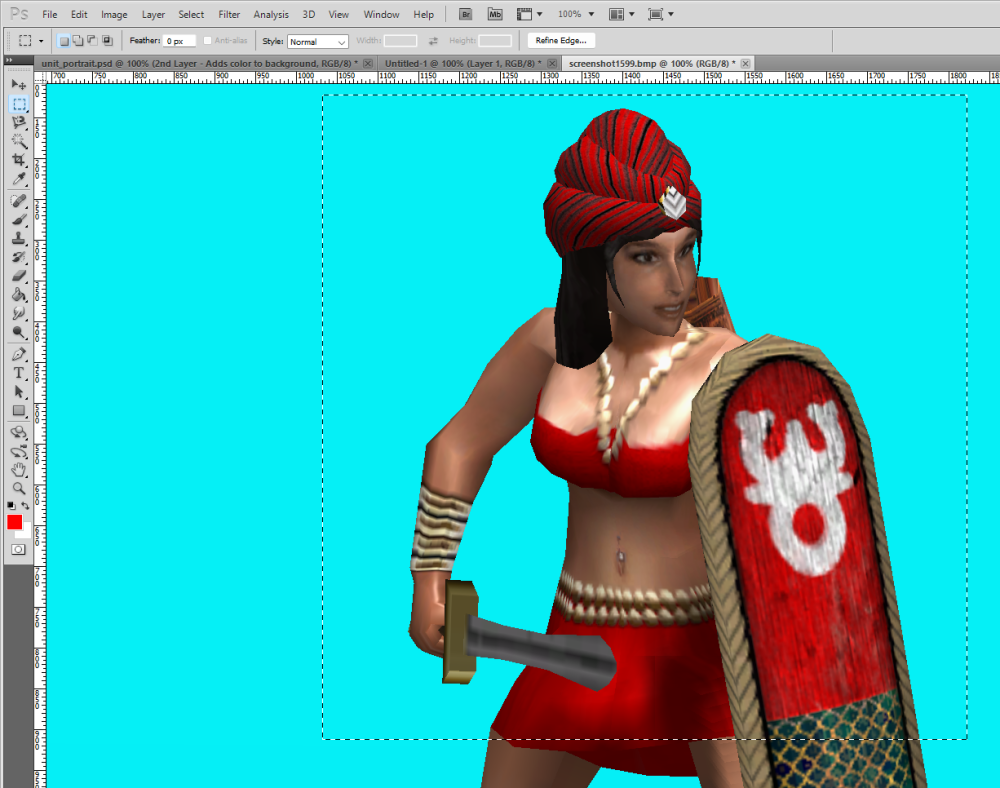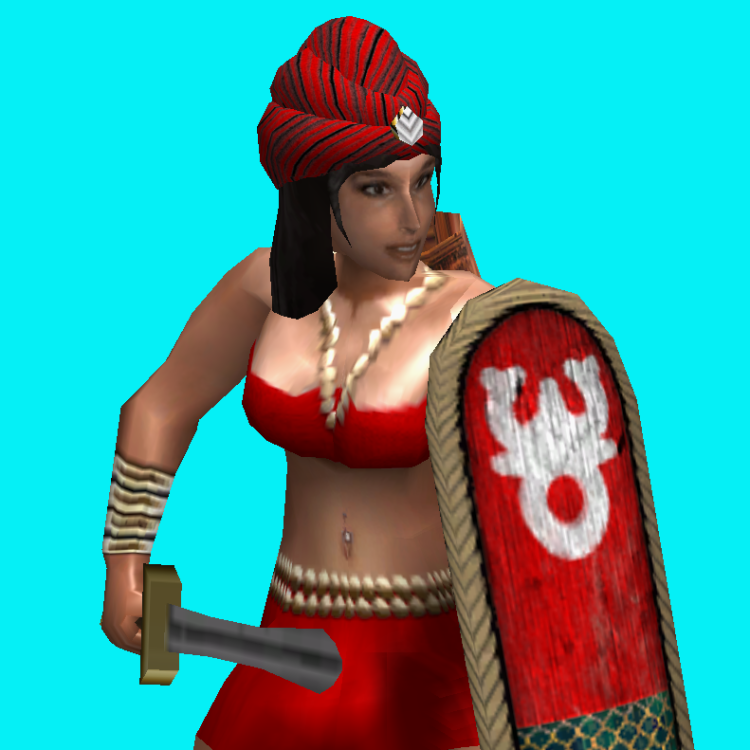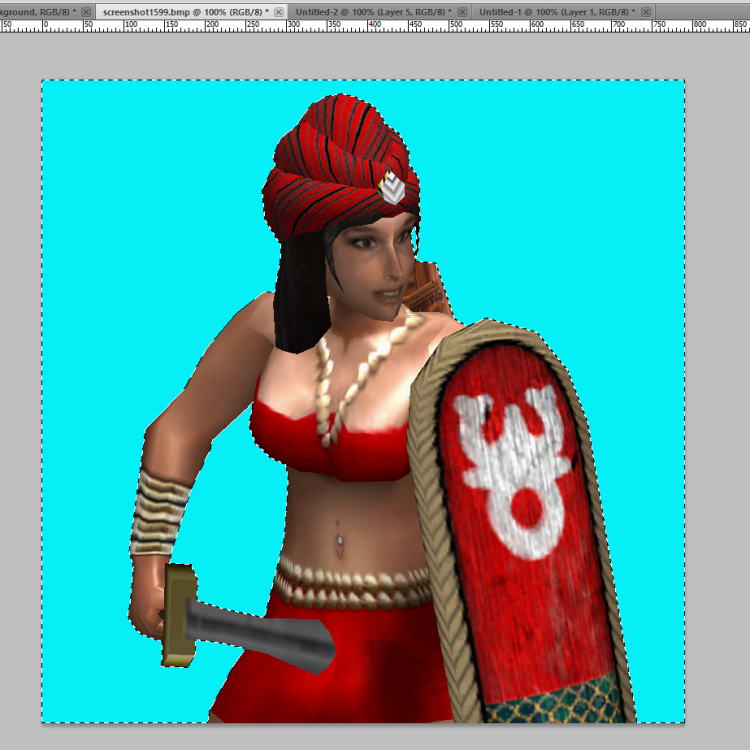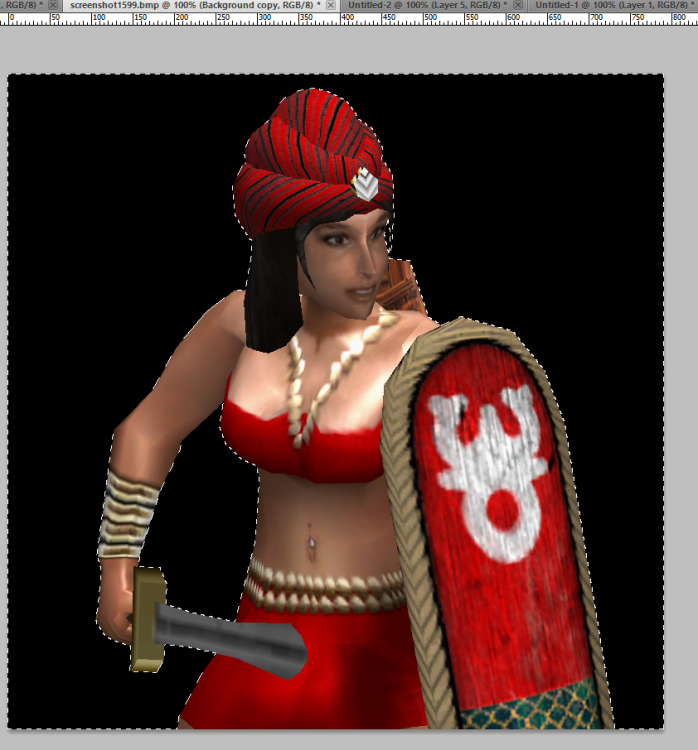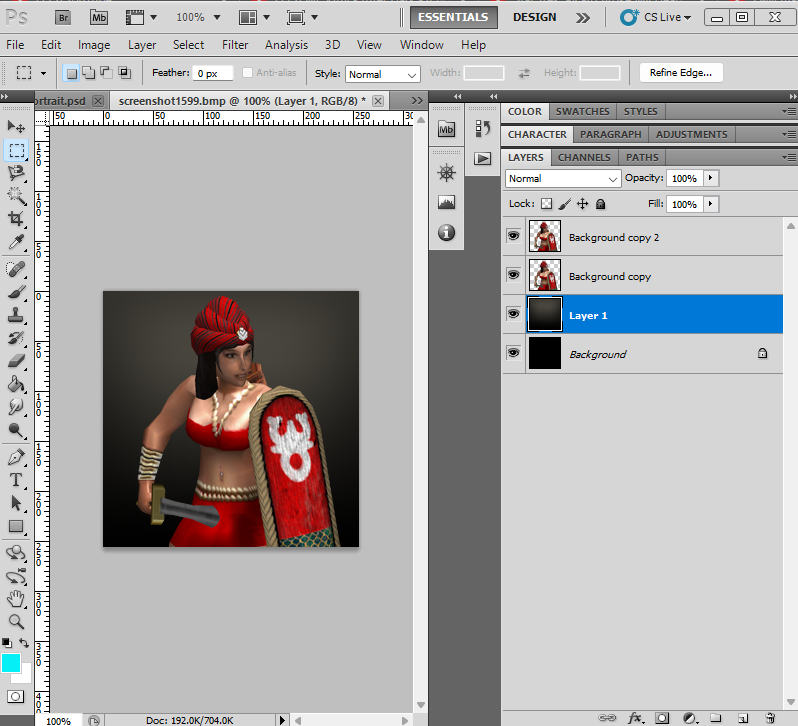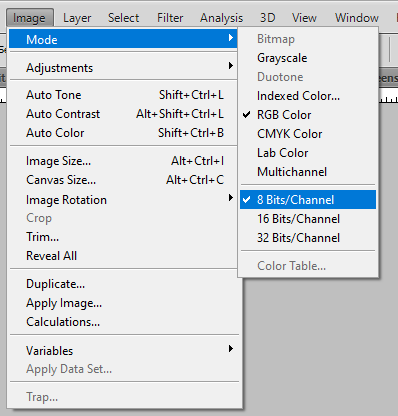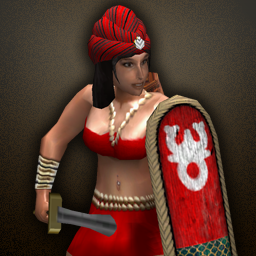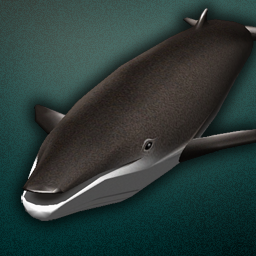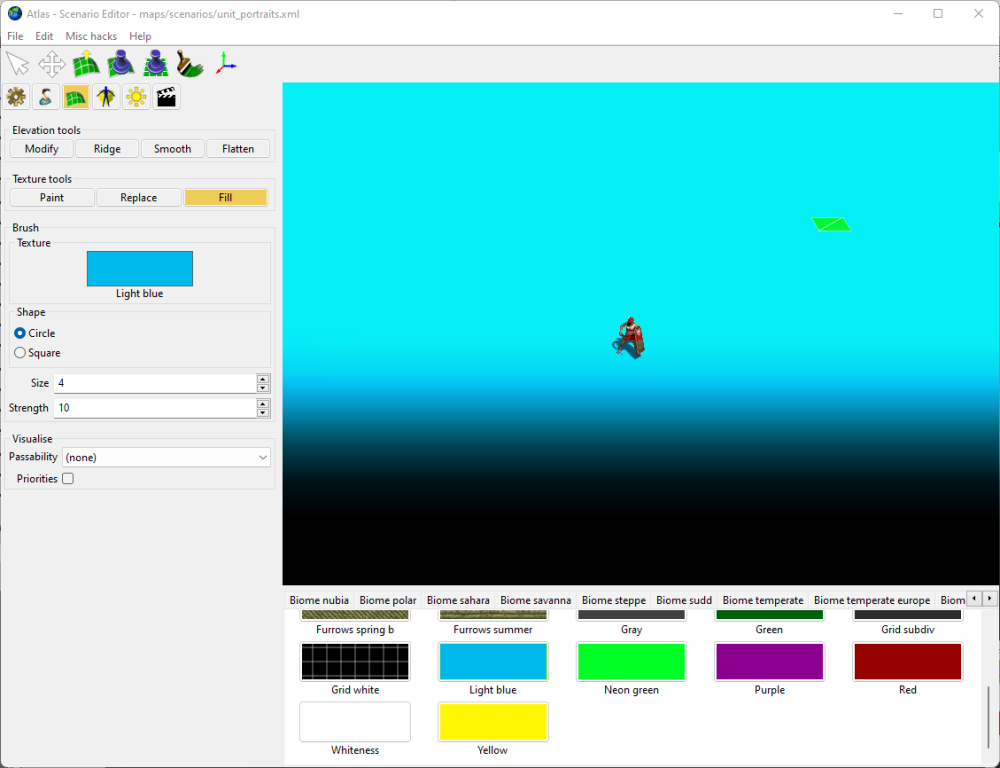-
Posts
11.012 -
Joined
-
Last visited
-
Days Won
556
Everything posted by wowgetoffyourcellphone
-
1. So, in Atlas I create a map and use one of the 'Special' terrains, such as purple, cyan, or green as the default terrain. These colors are easy to select and cut out in your image editing software (Photoshop, Gimp, Photopea, whatever) and just like when filming FX for movies, the right (contrasting) background color can ensure that you get a clean mask. Very important to turn off distance fog and bloom. I also turn off anti-aliasing, so that you get a nice crisp edge when selecting the background from the unit (or vice versa). 2. Zoom in on the unit, but not so close as to start getting foreshortening effects. You want the unit to appear relatively flattish. 3. Once I've setup the scene and get the camera and lighting I want, I use the Big Screenshot option to make a nice big detailed screenshot. The Big Screenshot option gives you a nice big 4K screenshot with which to cut out your unit. Import that screenshot into your image editing software and you are ready to start making your portrait. Make sure to set the image mode to RGB 8 bits per channel. 4. With the Rectangular Marquee tool, select a good position for the unit. Make sure that the marquee is SQUARE SHAPED. In Photoshop, the SHIFT hotkey makes the marquee perfectly square. 5. Now crop the image. 6. Then duplicate the background or first layer so that there are 2 of them. And make the bottom one all black. 7. With the top layer selected (the layer with the unit) use either the Magic Wand tool, or the Select -> Color Range tool (Magic Wand may use more clicks, but either works). We are going to select all of the CYAN (light blue) sections of the image. So, since I have a nice even-colored background that contrasts nicely with the foreground unit, and since I turned my Anti-Aliasing off, there is a nice crisp edge that will help me select only the background with either of the afore-mentioned selection tools. Once the cyan sections are selected, DELETE them. Since you made that black background layer, you will be able to see what cyan parts you missed. Now you have a nicely cut out unit layer. Now duplicate this layer. 8. And now we will resize the image to 256 x 256, the resolution of the unit portraits in-game. (can you see how sizing down the image as "anti-aliased" the edges for you?) 9. Now, add this image as another layer, just below the 2 unit layers: Almost there. To add the finishing touches we are going to add layer effects or "Layer Styles" (in Photoshop) to each of the unit layers. 10. Top layer always gets a Drop Shadow. With an OPTIONAL Bevel and Emboss. The Bevel and Emboss is only added to help dark areas, such a black hair or black horses, stand out from the drop shadow. 11. Almost there. Next is how we achieve the nice brown, noisy background color. Select the 2nd unit layer down. Add an "Outer Glow." Outer glow values are as follows -- Land Units RGB Color: 255, 138, 0 Opacity: 10% Noise: 50% Size: 100 px Naval/Water Units: RGB Color: 0, 255, 255 Opacity: 20% Noise: 20% Size: 200 px Technologies: RGB Color: 0, 168, 255 Opacity: 10% Noise: 50% Size: 100 px 12. From here, the last step is to go ahead and save your new portrait in the correct mod folder for portraits. Make sure to save it in the PNG format, non-interlaced. The cool thing is, once you've done one portrait to your liking you can save that project file for future reference. In Photoshop you can just copy all of the layer styles over to any new portrait you're working on. Attached is the file for the image I just created: unit_portrait_01.psd
-

Civ: Germans (Cimbri, Suebians, Goths)
wowgetoffyourcellphone replied to wowgetoffyourcellphone's topic in Delenda Est
@Obskiuras This album might give you a bunch of ideas. https://imgur.com/a/EN08d -
One of @Mythos_Ruler's crasy ideas.
-
No, the references you posted were definitely used when creating the building set. 100% Cute. Strategic Map?
-
Then our current one is 3.0 and the Harmya is from the 2.0 civic center.
-
Original model. The current CC model is the 2nd one.
-
It's from the original Civic Centre model.
-

Change shifting borders' system.
wowgetoffyourcellphone replied to xJUSTICEx's topic in Gameplay Discussion
I agree that borders are rather... spongey. I agree too that walls, palisades, and defensive structures should essentially block enemy border expansion. The parameter in TerritoryInfluence/Weight can be adjusted for this, but also there needs some territory code changes to help prevent the weird territory bubbles that form beyond those blocking structures. -

Mythos_Ruler's Playlist
wowgetoffyourcellphone replied to Mythos_Ruler's topic in Introductions & Off-Topic Discussion
-

suggestion about cav ...
wowgetoffyourcellphone replied to JC (naval supremacist)'s topic in Gameplay Discussion
Cavalry = 2 pop -

Civ: Germans (Cimbri, Suebians, Goths)
wowgetoffyourcellphone replied to wowgetoffyourcellphone's topic in Delenda Est
Just a large tower or do you have extra architecture you wish to add?

